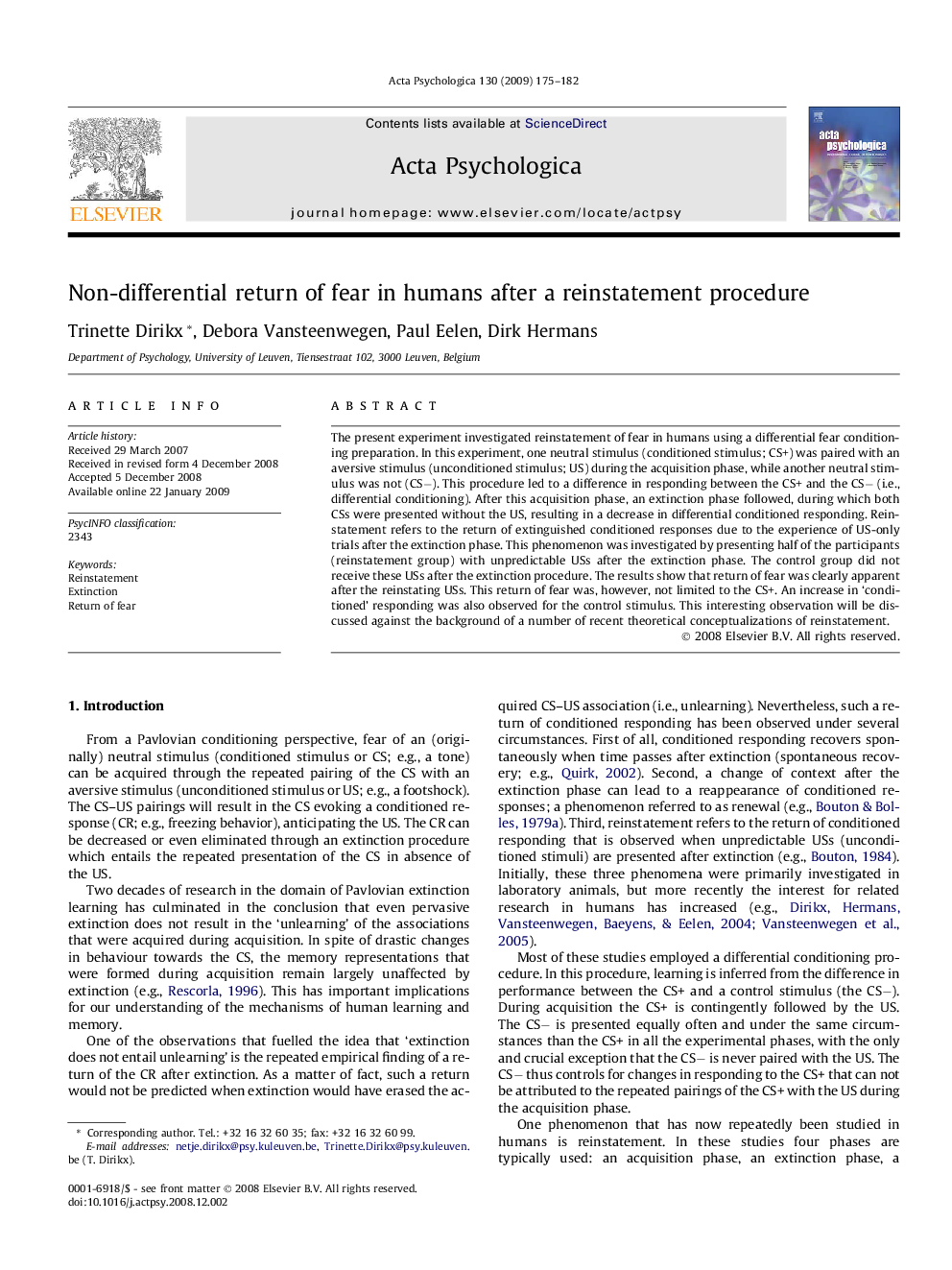| Article ID | Journal | Published Year | Pages | File Type |
|---|---|---|---|---|
| 920378 | Acta Psychologica | 2009 | 8 Pages |
The present experiment investigated reinstatement of fear in humans using a differential fear conditioning preparation. In this experiment, one neutral stimulus (conditioned stimulus; CS+) was paired with an aversive stimulus (unconditioned stimulus; US) during the acquisition phase, while another neutral stimulus was not (CS−). This procedure led to a difference in responding between the CS+ and the CS− (i.e., differential conditioning). After this acquisition phase, an extinction phase followed, during which both CSs were presented without the US, resulting in a decrease in differential conditioned responding. Reinstatement refers to the return of extinguished conditioned responses due to the experience of US-only trials after the extinction phase. This phenomenon was investigated by presenting half of the participants (reinstatement group) with unpredictable USs after the extinction phase. The control group did not receive these USs after the extinction procedure. The results show that return of fear was clearly apparent after the reinstating USs. This return of fear was, however, not limited to the CS+. An increase in ‘conditioned’ responding was also observed for the control stimulus. This interesting observation will be discussed against the background of a number of recent theoretical conceptualizations of reinstatement.
